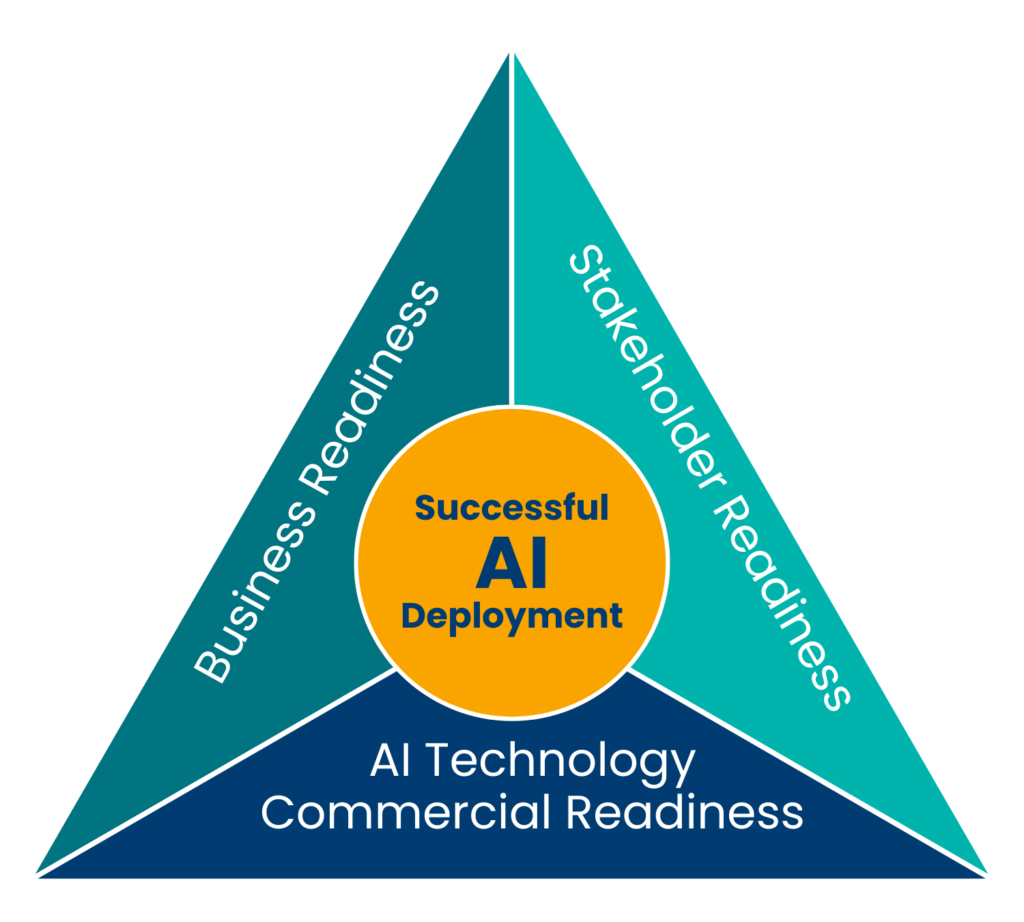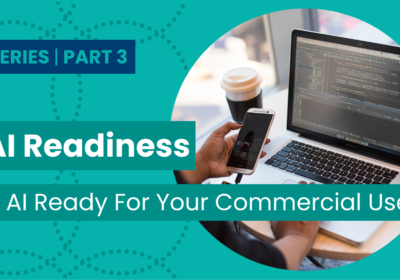
Prepare for a speed check
Where is your business with AI readiness today? If you believe every AI headline you read, you may be tempted to believe that your business is already way behind in the race for innovation. But before you hit the gas and start green-lighting AI across your organization, I suggest you yield to some common sense and long-standing business best practices.
Welcome to a series of articles aimed at helping you manage the pace and practicality of your AI journey. My goal is to help you get the most impactful benefits of emerging technology while avoiding potentially catastrophic potholes along the way.
Let’s start with one important question: Which of the following is critical to effectively using AI technologies to build your business and accelerate your revenues and profits?
(a) Assessing the commercial readiness of the technologies to be deployed and supported
(b) Identifying how AI technology can add value to your business
(c) Understanding how well AI technology will be accepted by customers and employees
(d) Evaluating your internal business readiness to deploy and support AI technologies
(e) Developing a plan with goals, milestones, investments and returns, and key success metrics
(f) All of the above
Not much of a trick question, is it? Give yourself a gold star if you think the answer is (f). But please note what is NOT on the list: Jumping into AI without a business case.
The first rule of AI readiness
AI technology is NOT a business strategy. It’s not even a technology strategy.
You might be surprised by that. But “random acts of AI” are a good way to throw precious marketing and technology funding down a black hole, to under-deliver against what your stakeholders want, and to under-perform against your investment and growth expectations.
The second rule of AI readiness
Commercial AI technology readiness is NOT the same as your business readiness to deploy AI.
AI technologies have developed to the point where they have massive market visibility and are on their way to becoming technologically mature and secure. Are they ready to use out-of-the-box today? If you believe the hype of major technology vendors like Google and Microsoft, both of whom are pushing AI, you are already late to the party if you haven’t started.
The numbers are enticing
I read a claim that 71% of U.S. businesses are using AI today:
“AI is already playing a role in many businesses and AI adoption is growing. In a recent IDC study, 71% of surveyed respondents said that their companies were already using AI. And, according to IDC’s Worldwide Artificial Intelligence Systems Spending Guide (August 2023), enterprise spending on AI solutions is expected to grow to $423 billion at a compound annual growth rate (CAGR) of 26.9% for 2022–2027.”
Microsoft White Paper “AI Use Cases for Business Leaders” (2024)
Meanwhile, there are 33.3 million small businesses in the United States, according to the U.S. Small Business Administration. Do you think 71% of the businesses in your market are rushing ahead with a sophisticated AI plan? I think not. In the midst of the shiny-object frenzy and “everyone’s doing it” pressure, business leaders can be tempted to run toward AI, when it may be wiser to walk.
Cautionary tales abound
You may have read articles on Google’s Gemini chatbot. As recently as February of 2024 the chatbot was generating historically inaccurate images of white historical figures as people of color. The old technology adage of “garbage in, garbage out” is extremely significant to AI, especially if the content belongs to someone else.
States and characteristics of business and AI readiness
The readiness of individual businesses to understand their key opportunity areas and to tie AI deployment to growth in the form of new channels, new customers, and new offerings varies widely.
This chart should help illustrate my point:
The “What Do I Do First?” State
Low technology readiness & low business readiness
- Weak internal knowledge of AI technologies
- No AI use cases or strategy or plan
- Limited understanding of how AI can accelerate business
The “What Do I Do Next?” State
Low technology readiness but high business readiness
- Strong desire to access AI-supported opportunities
- May be willing to innovate “AI-supported” business strategy
- AI technology roadmap under-developed
The “Why Isn’t It Working?” State
High technology readiness but low business readiness
- AI tech without strategy or plan
- Impact of AI unknown, no use cases
- Poor customer reception to AI-enabled business processes
- No roadmap, milestones, or investment metrics
The “Target” State
High technology readiness & high business readiness
- AI strategy & plan aligned with business strategy & needs
- Strong insight into customer & partner needs & opportunities
- Roadmap & benefits defined
- Milestones, investment metrics identified & measured
If the key to successful AI deployment is about business readiness, then your goal should be to move your organization to the Target State.
Steps Toward AI Readiness
Unless you are legitimately running an AI pilot, or have found a financially viable business case, here’s what I would recommend from my experience as a former F-500 CIO and a current CMO who loves technology when it creates real business value:
- Get your hands dirty playing with AI technology. Just as early Apple Macintosh users used all the fonts available when the Mac first came out and created business documents which looked like ransom notes, try out the technology on something that doesn’t matter, and which won’t destroy your business’ reputation.
- Read everything on AI that you have time for and pay attention to honest case studies which you can learn from. Remember, you can learn as much from AI implementation failures as you can from successes.
- Start talking to your customers about business processes which you, and they, think can be improved if they were automated with AI solutions. You might be surprised at what they value.
- Start capturing your own business content so you will not have to rely on third party content.
- Increase your competitive analysis so you can measure the progress of your competitors. You may also be able to learn from their AI initiatives.
- Finally, spend your time developing a plan and a fund to invest in AI. And remember that your operating costs are going to have a significant people cost as you implement and support AI solutions. You may not even have the right talent onboard to do that effectively.
How do you know your level of business readiness and where you are on this model? Just as we advise avoiding “random acts of marketing”, we also advise avoiding random acts of technology adoption.
Dimensions of AI Readiness

This article is the first in a series where I share practical experience learned over 25 years as a Marketing and Technology executive. Each subsequent article will focus on one dimension of readiness.
I hope you’ll follow along as we dive deeper on this topic. Meanwhile, if you’d like to explore opportunities to leverage AI in your marketing programs, we are here to help.







